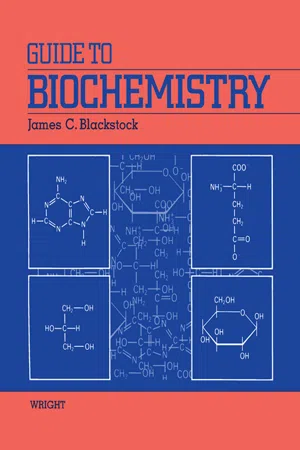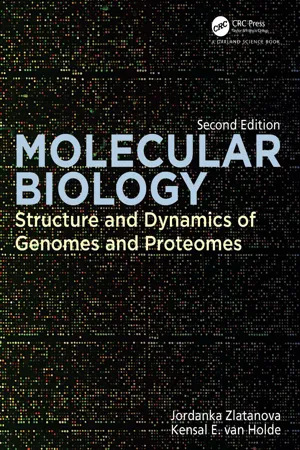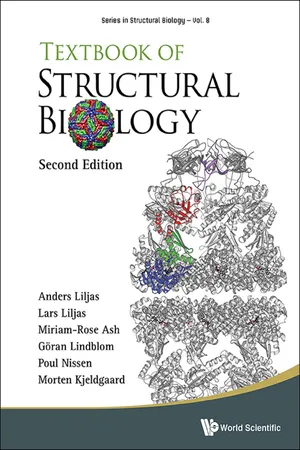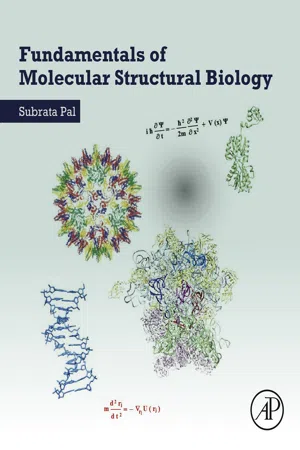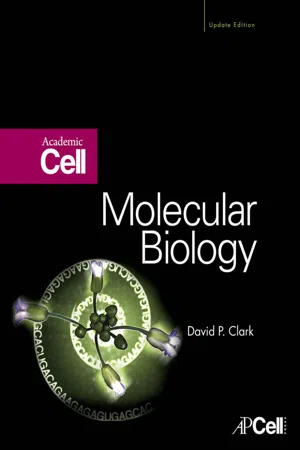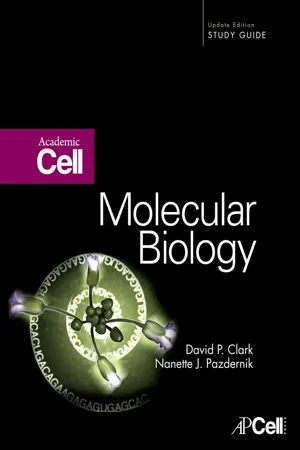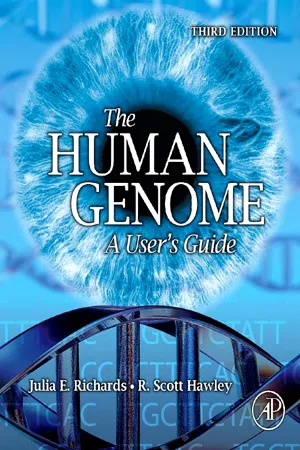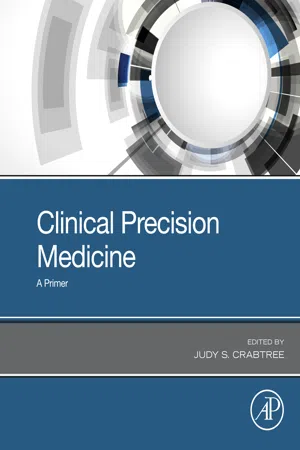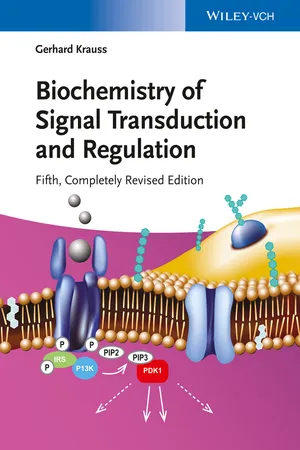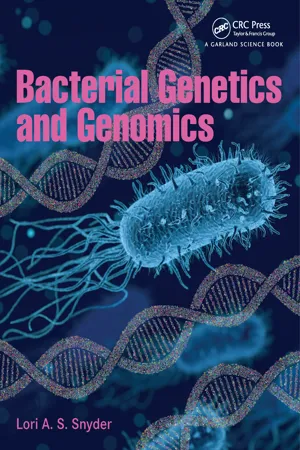Biological Sciences
Transcription
Transcription is the process by which genetic information encoded in DNA is copied into RNA. This process is essential for gene expression and protein synthesis in living organisms. During transcription, an enzyme called RNA polymerase binds to a specific region of the DNA and synthesizes a complementary RNA molecule based on the DNA template.
Written by Perlego with AI-assistance
Related key terms
12 Key excerpts on "Transcription"
- Naoki Sugimoto(Author)
- 2021(Publication Date)
- Wiley-VCH(Publisher)
6 Transcription The main points of the learning Learn how Transcription works. Study how Transcription is perturbed depending on DNA and RNA sequences. Understand how Transcription is regulated by change of chemical environments. 6.1 Introduction Transcription is the process by which the information in a strand of DNA is copied into a new RNA molecule including messenger RNA (mRNA) by an RNA polymerase enzyme. During Transcription, a DNA sequence is read by the RNA polymerase, which produces a complementary, antiparallel RNA strand called a primary transcript. Transcription factors can bind to specific DNA sequences called enhancer and promoter sequences in order to recruit RNA polymerase to an appropriate Transcription site. Then the RNA polymerase begins RNA synthesis by matching complementary bases to the original DNA strand. The RNA molecule is elongated, and, once the strand is completely synthesized, Transcription is terminated. The newly formed RNA copies of the gene are used for protein synthesis during the process of translation. This Transcription is highly regulated during both initiation and elongation [ 1 ]. Although fidelity of Transcription elongation is critical for maintaining the accurate flow of genetic information, Transcription elongation in cells and in vitro can be interrupted by certain sequences or structures [ 2 ]. Therefore, it is important to understand the effect of non-canonical DNAs on the Transcription process. In this chapter, the roles of non-canonical DNAs during Transcription are introduced with comparison of the difference from those of the canonical duplex- eBook - ePub
- James C. Blackstock(Author)
- 2014(Publication Date)
- Butterworth-Heinemann(Publisher)
CHAPTER 17Gene expression
Publisher Summary
This chapter presents the concept of gene expression. The concept of the central dogma of molecular biology, formulated in the late 1950s by Francis Crick may be summarized as DNA (deoxyribonucleic acid) →RNA (ribonucleic acid) →protein. Transcription is the process in which RNA is synthesized by enzymes called DNA-directed RNA polymerases. These enzymes use ribonucleoside triphosphates as substrates and DNA as a template. Specific base sequences signal the termination of Transcription. Transcription produces RNA molecules. Translation involves two compartments: the cytosol in which individual amino acids are enzymically attached to their specific tRNAs by amino-acid-tRNA ligases and the ribosomes in which the amino acids are correctly positioned according to the base sequence of a mRNA template and polymerized into polypeptide chains. As there are four major bases in mRNA, 43 different codons are possible. The 64 triplets constitute the genetic code. The genetic code applies to prokaryotes and eukaryotic nuclear and chloroplast mRNAs but not to mitochondrial mRNAs. Therefore, the genetic code is quasi-universal.17.1 The central dogma
The concept of the central dogma of molecular biology (Section 1.6 ), formulated in the late 1950s by Francis Crick may be summarized as DNA (deoxyribonucleic acid) → RNA (ribonucleic acid) → protein.In all living organisms, nuclear DNA serves as the reservoir of genetic information which is expressed in terms of the structure of proteins manufactured by the cell. The base sequence of the DNA determines the amino acid sequence of proteins which are responsible for all aspects of cellular function. Because of cellular organization, synthesis of protein from the DNA blueprint occurs in two stages: Transcription, i.e. the synthesis of a messenger RNA molecule of a structure complementary to the structure of DNA so that the genetic information is transferred to mRNA, and upon delivery of the message to the cytosol, its translation into protein. - eBook - ePub
Molecular Biology
Structure and Dynamics of Genomes and Proteomes
- Jordanka Zlatanova(Author)
- 2023(Publication Date)
- Garland Science(Publisher)
Transcription is initiated at a defined start site, which is part of the so-called promoter region. In bacteria, recognition of the promoter requires special σ subunits that are complexed with the multisubunit RNAP core complex. RNAP binding to the promoter opens a bubble in the DNA duplex, allowing the initiation of Transcription. In the next phase, elongation, the polymerase moves processively over long stretches of DNA but may pause from time to time. We discriminate short pauses from long pauses; in the latter, the proper placement of the 3′-end of the nascent RNA transcript in the bubble is lost, which requires special treatment. Elongation causes accumulation of superhelical stress in the DNA template, inhibiting Transcription. Special enzymes, topoisomerases, play a role in relaxing the DNA superhelical stress; in addition, the presence of multiple RNAPs on frequently transcribed regions largely negates inhibition by superhelical stress. The final phase, termination, can occur via several kinds of mechanisms. Sequence-specific termination requires special sequences at the 3′-end of the transcript that favor hairpin formation followed by release of the transcript. In other cases, termination is produced by a helicase enzyme, which recognizes a site on the nascent transcript, moves along the RNA chain toward the polymerase, and literally pulls the RNA chain out of the polymerase.9.1 Introduction
As we have seen in previous chapters, the genetic information in the cell is stored in DNA. But this information is expressed in the form of specific RNA and protein molecules. In fact, all this expression requires the synthesis of RNA molecules that are complementary in sequence to one of the two strands of DNA. The process of RNA synthesis, or Transcription, is an essential part of both production of mRNA templates for protein synthesis and generation of all the special RNA molecules needed in the cell. In this chapter, we first provide an overview of the basic mechanisms common to Transcription in all organisms and then present a more detailed picture as to how Transcription occurs in bacteria. Further aspects of the regulation of Transcription in bacteria will be covered in Chapter 11 .9.2 Overview of Transcription
There are aspects of Transcription common to all organisms
To begin, we introduce a number of concepts and/or conventions used to describe Transcription. First, the DNA strand whose sequence is being read to form RNA is called the template strand. Thus, the nucleotide sequence in RNA is a complementary copy of the sequence within this template strand. The nature of each nucleotide added to the nascent RNA chain is specified by base-pairing and complements the next unpaired nucleotide on the template strand. The pairing is exactly in accordance with the rules that define base pairing between the two complementary strands of a DNA molecule except that U, which pairs with A, substitutes for the T in DNA (Figure 9.1). Three different alternative designations are in use for the other DNA strand: sense strand, coding strand, or nontemplate strand. The first two designations reflect the fact that the sequence information in this DNA strand is exactly the same as in RNA, that is, that the two strands read exactly the same in the 5′ → 3′ direction, with U in RNA substituting for T in DNA; compare the sequences in blue inFigure 9.1 - Tina M. Henkin, Joseph E. Peters(Authors)
- 2020(Publication Date)
- ASM Press(Publisher)
central dogma of molecular biology, which states that information stored in DNA is copied into RNA and then translated into protein. We now know of many exceptions to the central dogma. For example, information can sometimes flow in the reverse direction, from RNA to DNA. The information in RNA also can be changed after it has been copied from the DNA. Moreover, the information in DNA may be expressed differently depending on where it is in the genome. Despite these exceptions, however, the basic principles of the central dogma remain sound.This chapter outlines the process of gene expression and protein synthesis, with a brief discussion of how proteins can be differentially localized after synthesis. The discussion is meant to be only a broad overview, with special emphasis on topics essential to an understanding of the chapters that follow and on subjects unique to bacteria. For more detailed treatments, consult any modern biochemistry textbook.Overview
DNA carries the information for the synthesis of RNA and proteins in regions called genes . The first step in expressing a gene is to transcribe an RNA copy from one strand in that region. The word “Transcription” is descriptive, because the information in RNA is copied from DNA in the same language, which is written in a sequence of nucleotides. If the gene carries information for a protein, this RNA transcript is called messenger RNA (mRNA) . An mRNA is a messenger because it carries the information encoded in a gene to a ribosome , which is the main machinery for protein synthesis. Once on the ribosome, the information in the mRNA can be translated into the protein. Translation is another descriptive word, because one language—a sequence of nucleotides in DNA and RNA—is translated into a different language—a sequence of amino acids in a protein. The mRNA is translated as it moves through the ribosome, 3 nucleotides at a time. Each 3-nucleotide sequence, called a codon , carries information for a specific amino acid. The assignment of each of the possible codons to an amino acid is called the genetic code- eBook - ePub
- Anders Liljas, Lars Liljas;Miriam-Rose Ash;G?ran Lindblom;Poul Nissen;Morten Kjeldgaard(Authors)
- 2016(Publication Date)
- WSPC(Publisher)
10Transcription
Transcription is the cellular process where rRNA is synthesized by DNA-dependent rRNA polymerases from the four ribonucleoside triphosphates using DNA as a template. In eukaryotes, the regulation of Transcription is central for cell differentiation and organism development. Thus, the complex regulatory system is equally important as the rRNA polymerase. The direction of the synthesis is from 5′ to 3′. The rRNA is a complementary copy of the template strand of DNA through Watson–Crick base-pairing. Furthermore, it is an exact copy of the non-template DNA strand except that the thymine base of the DNA is replaced by uracil in rRNA. There are also RNA-dependent rRNA polymerases, for example, in viruses with rRNA genomes. The rRNA molecules synthesized are either used as tools in the cell such as tRNA, ribosomal rRNA or molecules containing information such as messenger rRNA used for translation, or RNAi and microRNA controlling gene expression.As all polymerizing processes, Transcription can be considered as three separate steps, initiation, elongation and termination. In order to copy the DNA, the Transcription start site (TSS), has to be identified. The rRNA polymerase is itself unable to initiate Transcription efficiently and specifically. This process is therefore aided by a range of proteins that act as activators or repressors for the initiation. However, viral Transcription is usually performed by single subunit rRNA polymerases without the help of additional protein factors.10.1Control Elements in DNA
Transcription is a central process in all cells. The synthesis of all molecules in the cell depends on the Transcription of appropriate molecules. Depending on the state of the cell and its environment, different needs have to be met. Therefore, Transcription needs to be highly regulated. This is done in a number of ways. In particular, specialized Transcription factors (TFs) can activate or repress genes (Section 10.2 ). During initiation, general Transcription factors (GTFs) also regulate expression. Furthermore, to transcribe the highly packaged DNA (see Section 9.1 - eBook - ePub
- Subrata Pal(Author)
- 2019(Publication Date)
- Academic Press(Publisher)
Chapter 9Transcription
Abstract
Chapter 5 has introduced the macromolecules present in a cell. We have learnt that one of the macromolecules, DNA, carries the genetic information. In this chapter, we shall address the question as to how the genetic information is transferred from DNA to another macromolecule, RNA, in a process called Transcription. We shall see that Transcription is an outcome of the interaction between an enzyme called RNA polymerase (RNAP) and the DNA. Therefore, specific structural features of these two macromolecules will be considered to explain the interaction, and thus, understand the mechanism of Transcription, first in bacteria and then in eukaryotes. Further, we shall see that RNAP-DNA interaction is facilitated or impeded by other molecules in the cell. Pertinent structural features of some of these facilitators and inhibitors will also be considered to understand how the process of Transcription is regulated.Keywords
Macromolecule; DNA; RNA; RNA polymerase; Promoter; Terminator; Transcription factor; Mediator; Activator; RepressorChapter 5 has introduced the macromolecules of a cell—their structures and functions. Further, we have seen in the previous chapter how one of the macromolecules, DNA, that carries the genetic information of the cell is replicated. This chapter will address the question as to how this genetic information is transferred from DNA to another macromolecule, RNA, in a process called Transcription.9.1 Basic requirements for Transcription
In a sense Transcription is similar to DNA replication—both involve the synthesis of a new strand of nucleic acid. However, in the case of Transcription, the new strand is synthesized by the addition of ribonucleotides, and not deoxyribonucleotides.Further, like DNA replication, the assembly of ribonucleotides in Transcription is not random; it is also directed by a DNA template strand. Nevertheless, in contrast to replication where the entire genome is copied once, and only once, in every cell division, Transcription copies only specific segments of the genome (genes) and can generate one to several thousand copies from a given segment. Even in such case, the DNA segment needs to be unwound and the bases unpaired so that nucleotide incorporation can proceed in accordance with the principle of base complementarity. One more distinguishing feature is that, unlike replication, in Transcription the RNA product does not remain base-paired with the template. - eBook - ePub
- David P. Clark(Author)
- 2009(Publication Date)
- Academic Cell(Publisher)
messenger RNA , or mRNA. Since the great majority of genes encode proteins, we will deal with these genes first.DNA “merely” stores genetic information. Putting the information to use requires RNA and (usually) protein.Messenger RNA carries the information for making proteins from the genes to the cytoplasm.For a gene to be transcribed, the DNA, which is double stranded, must first be pulled apart temporarily, as shown in Figure 6.01 . Then, RNA is made by RNA polymerase . This enzyme binds to the DNA at the start of a gene and opens the double helix. Finally, it manufactures an RNA molecule.Figure 6.01 Transcription in Its Simplest Form The two strands of the DNA to be transcribed are separated locally. The top strand serves as a template for building a new RNA molecule.The sequence of the RNA message is complementary to the template strand of the DNA from which it is synthesized. Apart from the replacement of thymine in DNA with uracil in RNA, this means that the sequence of the new RNA molecule is identical to the sequence of the coding strand of DNA; that is, the strand not actually used as a template during Transcription. Note that RNA, like DNA, is synthesized in the 5′-to 3′- direction (Fig. 6.02 ). Other names for the template strand are the non-coding or anti-sense strand; other names for the coding strand are non-template or sense strand. Only one of the strands of DNA is copied in any given transcribed region. [But note that the two different strands of the DNA may each be used as templates in different regions of the chromosome.]Figure 6.02 Naming the Basic Components Involved in Transcription - eBook - ePub
Molecular Biology
Academic Cell Update Edition
- David P. Clark(Author)
- 2012(Publication Date)
- Academic Cell(Publisher)
CH 6 Transcription of Genes Summary Converting DNA into a messenger RNA copy (mRNA) is called Transcription and is the first step of expressing one particular gene into a protein. This is a key step in the central dogma of molecular biology As in replication, Transcription has the same basic steps in eukaryotes and prokaryotes, but the details are different in the two types of organisms. Basically Transcription begins by opening the DNA helix around the beginning of a gene. The Transcription apparatus (including RNA polymerase) moves into the beginning of the gene and starts assembling ribonucleotides into a linear chain called mRNA. The mRNA is made from only one strand, called the template strand (also known as non-coding or anti-sense strand), and the other strand (known as the coding strand or sense strand) of the DNA helix is not used. Ribonucleotides are assembled until RNA polymerase encounters a terminator sequence. In order to start Transcription, a promoter region of DNA is recognized by RNA polymerase. The promoter has many elements that vary from organism to organism. In bacteria like E. coli, promoters have two conserved domains, the −10 sequence and −35 sequence, which are specific sites recognized by the sigma subunit of RNA polymerase. The −10 and −35 refer to the number of bases upstream of where RNA polymerase starts making mRNA. The sigma subunit of bacterial RNA polymerase binds to these two regions, and then recruits the core enzyme, which opens the DNA helix to form a Transcription bubble. At one specific purine (usually A, but sometimes G) flanked by two pyrimidines (usually CAT), RNA polymerase starts making mRNA by adding ribonucleotides one at a time. The enzyme continues catalyzing mRNA until it reaches a terminator sequence at the end of the gene - eBook - ePub
- Julia E. Richards, R. Scott Hawley(Authors)
- 2010(Publication Date)
- Academic Press(Publisher)
Chapter 3. The Central Dogma of Molecular Biology How Cells Orchestrate the Use of Genetic InformationOutline3.1 What Is RNA?84Permanent DNA and Temporary RNA Copies84Single-Stranded and Mixed-Stranded RNA873.2 What Is RNA For?873.3 Transcription of RNA89The Process of Transcription893.4 Orchestrating Expression91The Concept of a Promoter92Regulators93Cis and Trans933.5 Monitoring Gene Expression95RT-PCR: One Gene at a Time95Northern Blots: One Gene at a Time95Sequencing the Complete Transcriptome96Microarrays963.6 Interaction of Transcription Factors98An Example of Two Regulatory Factors That Play a Critical Role in the Eye98Enhancers – Another Level of Regulation100RNA Turnover1013.7 Inducible Genes102Hormones1033.8 Epigenetic Control of Gene Expression1043.9 What Constitutes Normal?106The Problem with Diagnosing an Inducible Phenotype107Induction and Gene Regulation108So What or Who Is Normal Anyway?109 - eBook - ePub
Clinical Precision Medicine
A Primer
- Judy S. Crabtree(Author)
- 2019(Publication Date)
- Academic Press(Publisher)
An equally complex network of regulation controls gene expression or the process by which the blueprint information stored in an individual's DNA is converted into these functional proteins. Because of this complexity, small variations or alterations at any step in the conversion of DNA into protein may have significant outcomes that contribute to the development of the diseased state. More importantly, although individuals may have what appears to be an identical pathological presentation of a disease, many times the underlying genetic alterations that led to the development of this disease may be different, which could greatly affect their responses to therapy. Therefore, it is important to understand the molecular genetics of gene expression to better understand how the treatments used in the clinic are based solidly in the molecular mechanisms of the disease. In the late 1950s, Francis Crick proposed what would become known as the central dogma of molecular biology to describe the flow of gene expression from DNA through RNA and into protein (Fig. 2.1). In this central dogma, DNA serves as the template for the duplication of itself through a process called replication. The DNA also serves as the template for the production of the various forms of RNA (messenger RNA [mRNA], transfer RNA [tRNA], ribosomal RNA [rRNA], and microRNA [miRNA]) through a process called Transcription. Finally, the mRNA serves as the template for the production of protein, which it does with the assistance of tRNA and rRNA, through the process called translation - Gerhard Krauss(Author)
- 2014(Publication Date)
- Wiley-VCH(Publisher)
4 The Regulation of Gene Expression4.1 The Basic Steps of Gene Expression
The transfer of genetic information from the level of the nucleic acid sequence of a gene to the level of the amino acid sequence of a protein or to the nucleotide sequence of RNA is termed gene expression. In eukaryotes, gene expression includes the following steps:- Transcription: the formation of a primary transcript, the pre-mRNA.
- Conversion of the pre-mRNA into the mature mRNA: this includes processing, splicing, and transport from the nucleus to the cytosol.
- Translation: synthesis of the protein on the ribosome.
The expression of genes follows a tissue- and cell-specific pattern, which determines the function and morphology of a cell. In addition, all development and differentiation events are characterized by a variable pattern of gene expression. The regulation of gene expression thus plays a central role in the development and function of an organism. Because of the multitude of individual processes which are involved in gene expression, there are many potential regulatory sites (Figure 4.1 ).Levels of regulation of eukaryotic gene expression.Figure 4.14.1.1 Regulation of Transcription
At the level of Transcription, it can be determined whether a gene is transcribed at a given point in time. The chromatin structure plays a decisive role in this regulation, and chromatin structures exist that can effectively inhibit Transcription and shut down a gene. This “silencing” of genes can be either transient or permanent, and is generally observed in development and differentiation processes. The regulated Transcription of genes requires as an essential step the reorganization and modification of the chromatin, which is a prerequisite for the initiation of Transcription.- No longer available |Learn more
- Lori A.S. Snyder(Author)
- 2020(Publication Date)
- Garland Science(Publisher)
Part II RNA, Transcriptional Regulation, and TranscriptomesThe following three chapters will explore in more detail the role of RNA in the bacterial cell, the regulation of Transcription of various RNAs in the bacterial cell, and the study of the whole of the transcripts within the bacterial cell that make up the transcriptome . These chapters will build on material presented in Part I of this book, presenting the material introduced there in more depth and detail.Passage contains an image
Chapter 4RNARNA, ribonucleic acid, is a key biological molecule and in bacteria it is responsible for a variety of functions within the cell. The RNA from bacterial cells has been investigated using a variety of techniques, starting from the simple isolation of the nucleic acids away from the other components of the cell to understanding the sequence order of the ribonucleotides. Each of the types of RNA (mRNA, tRNA, rRNA, and ncRNA) has differences in their lengths, compositions, functions, and structures. These differences will be explored in this chapter, demonstrating how various RNAs contribute to the regulation of gene expression.Bacterial mRNAs are translated into proteins as they are being transcribedBacterial mRNA, messenger RNA, is transcribed and then used immediately. Unlike eukaryotic mRNA, it is not packaged and it is not transported to another part of the cell. As a result, the opportunity for mRNA to interact with itself or with other molecules within the cell is reduced. Bacteria engage in coupled Transcription− translation, which means that as the DNA is being transcribed to make mRNA, that mRNA is being translated to make the protein encoded by the gene on the DNA. There are very few changes to the mRNA transcript after it is made.As a result, the mRNA transcript is ready to be translated into protein immediately (Figure 4.1
Index pages curate the most relevant extracts from our library of academic textbooks. They’ve been created using an in-house natural language model (NLM), each adding context and meaning to key research topics.

